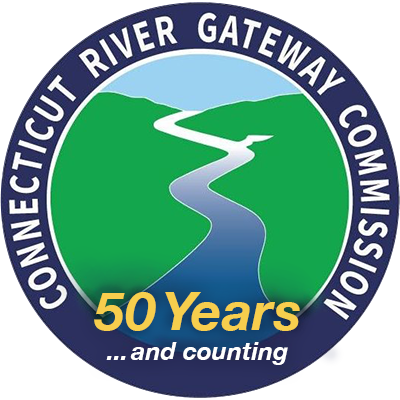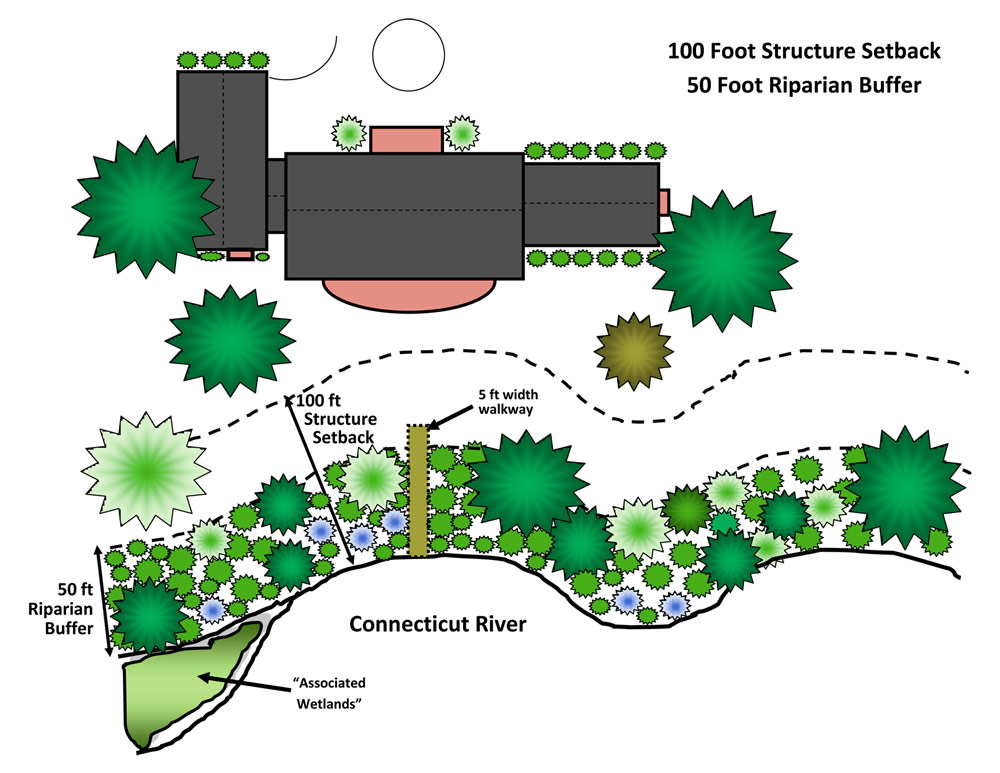What Can I Do?
Riparian Buffers and Landscape Plantings
Arborists, Landscapers, and Tree Services
Towns within the Zone have adopted a riparian buffer standard requiring that vegetation be left within a minimum of 50 feet from the Connecticut River, its tributaries and marshes. (Old Saybrook has adopted a 100-foot riparian buffer requirement).
Retaining natural vegetation between a lawn, which is often maintained with fertilizers and pesticides, and the Connecticut River reduces the potential for chemicals to wash into the water following storms or irrigation.
Riparian buffers make use of the earth as an effective “filter” to protect the river’s water and stabilize slopes to prevent erosion. Our local wildlife – from osprey to microscopic species – that make the river valley so appealing benefit from smart design.
Your suggestions for native shrubs and plants will further benefit the river valley’s health. Although Connecticut generally has plentiful rain, the state has experienced more frequent summer dry spells and even droughts. Xeriscape design using native plants that are drought tolerant can be an effective option.
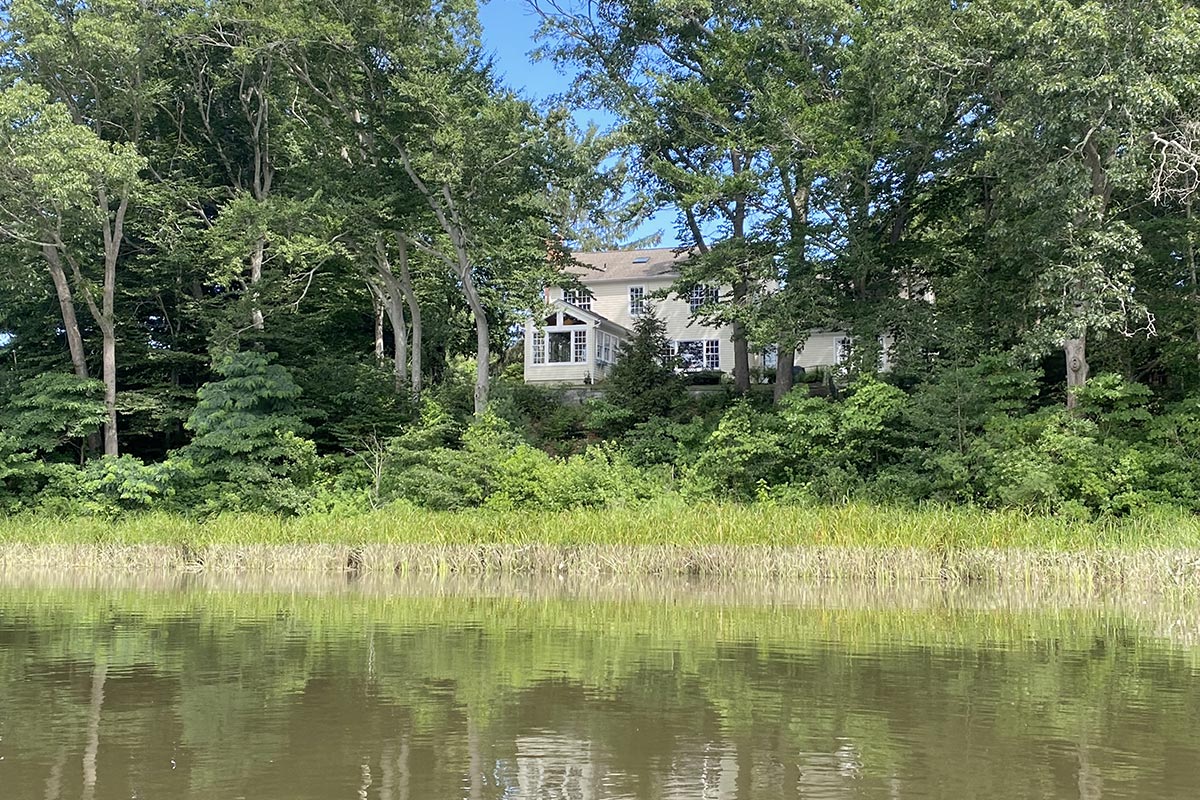
A great example of a riparian buffer.
What should I suggest for waterfront plantings?
Our local pollinators have evolved to depend on our local plants. Our caterpillars and bees can’t use trees from China and Japan.
The monarch butterfly is a good example, as it needs milkweed to survive. Without milkweed, there will not be monarchs, and we don’t typically put these “weeds” in our yards. Their removal from fields by farmers, moreover, has also threatened monarchs.
You may wish to recommend a variety of native pollinating plants, including milkweed, and grasses in a landscape.
What is a “pollinator pathway?”
Pollinators are extremely important to our environment. They allow farms, orchards, our gardens, and plants to bear fruit and reproduce. According to the Bee Conservancy, these insects pollinate 1 in 3 bites of food we eat.
Bees and monarch butterflies, among other species, are in serious decline from habitat loss and indiscriminate pesticide use.
Well-managed yards connecting to other nearby yards with similar management create a “pathway” for these critical pollinators to survive.
Many Connecticut communities have active Pollinator Pathway programs which can offer advice about plants, pollinators and natural ecosystems.
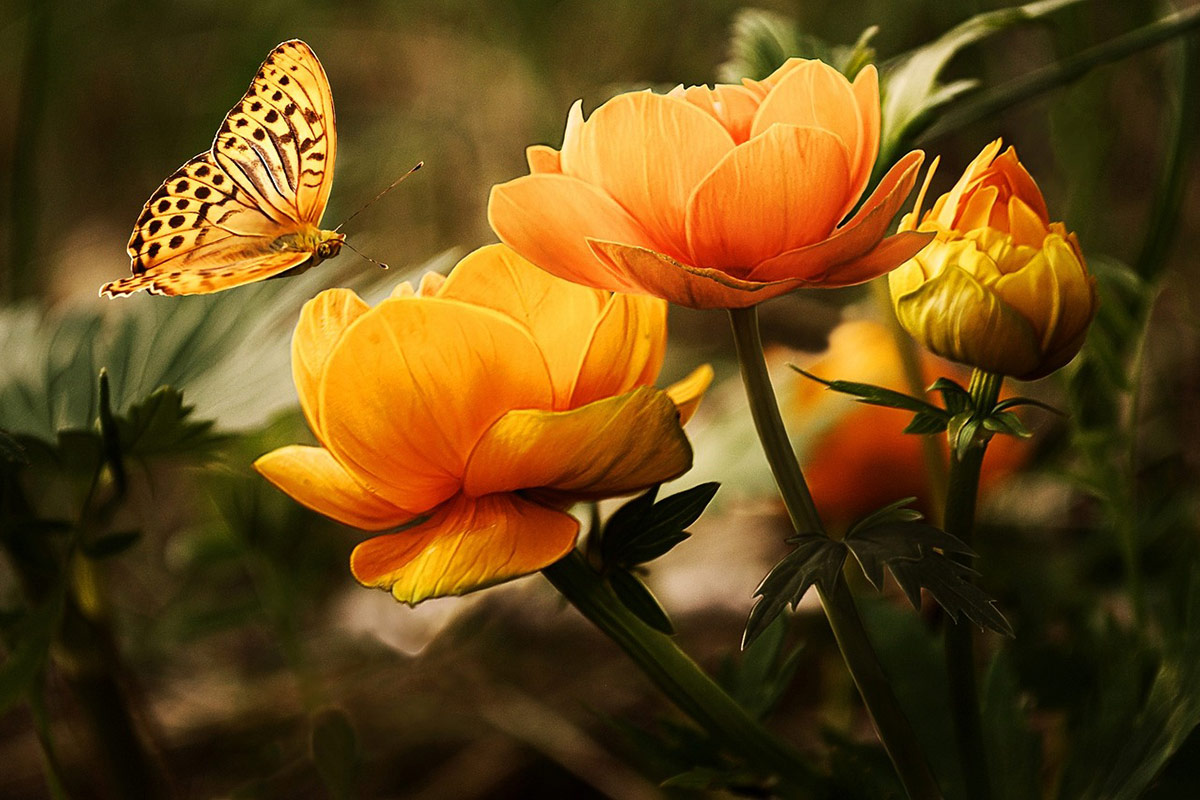
Flowers with pollinators, Larisa Koshkina
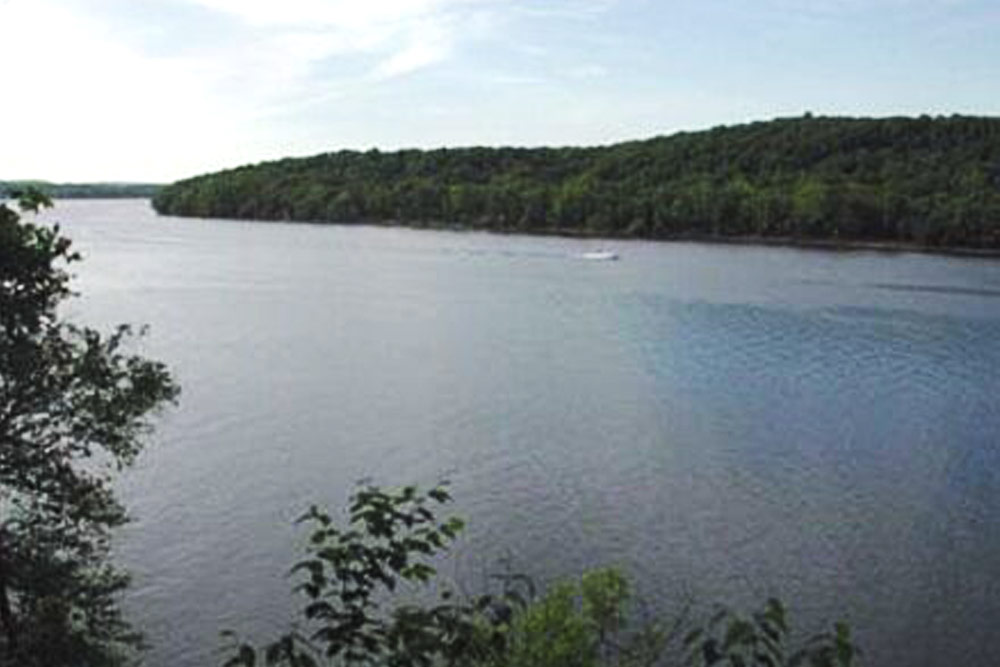
Connecticut’s Largest Island is in Lyme
Selden Island on the east side of the Connecticut River was created in 1854 by storm runoff that separated it from mainland Lyme. At 604 acres, it is the largest Connecticut island. Once a farm and later a stone quarry that produced red granite schist for paving, today it contains Selden Neck State Park which is only accessible by boat — as the state’s sole island state park.
